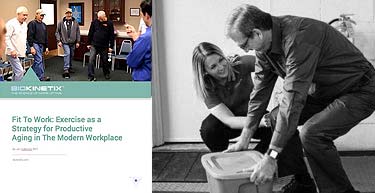Abstract:
As the future of work continues to shift, one of the most pertinent concerns that has emerged over the past decade is the greying of the labor force. This demographic trend carries critical implications for both older workers and their employers. Aging is a complex process that impacts the various dimensions of work ability. The limitations associated with aging can be mitigated directly with exercise: an evidence-based form of intervention that has proven invaluable in optimizing safety and health outcomes for older workers both on and off the job.
Sample:
The massive increase of the median age of the workforce can be attributed primarily to population aging. The majority of older Americans are members of the “baby-boom” generation, one of the many terms used to reference the dramatic post-World War II surge in the birth rate between 1946 and 1964.
According to the Bureau of Labor Statistics, 40% of Americans over 55 are either employed or actively seeking employment, and as a group currently form 21.7% of the labor force [Toossi]. By 2024, 25% of U.S. workers (and 38% of the population) will be age 55 or older.




